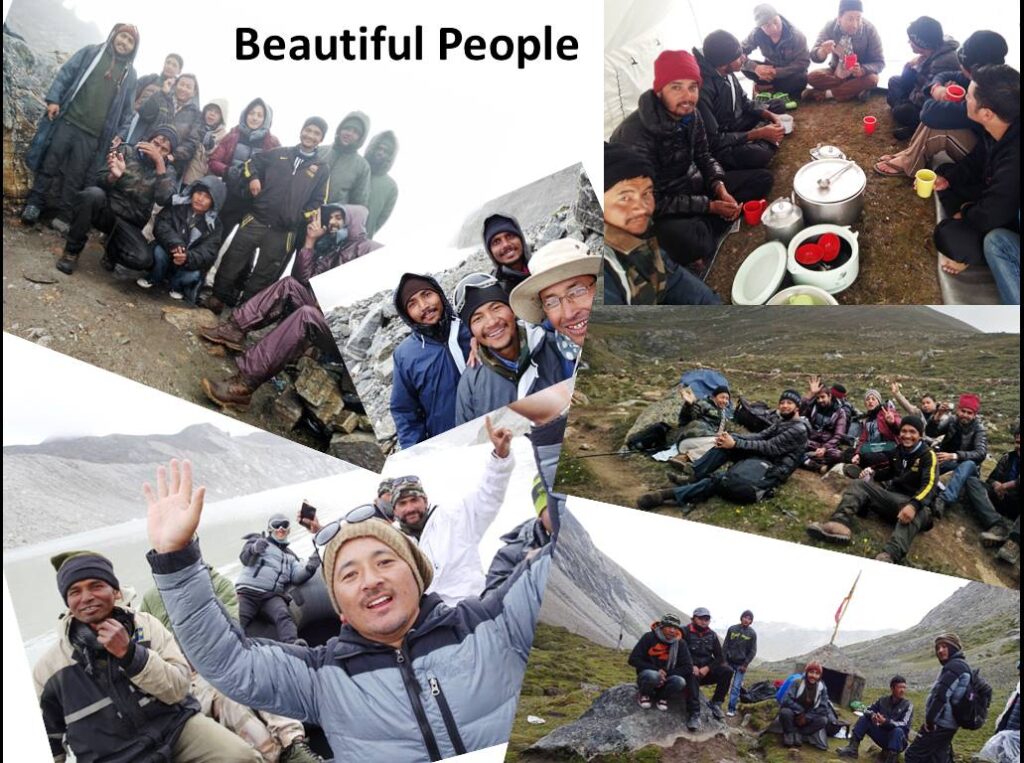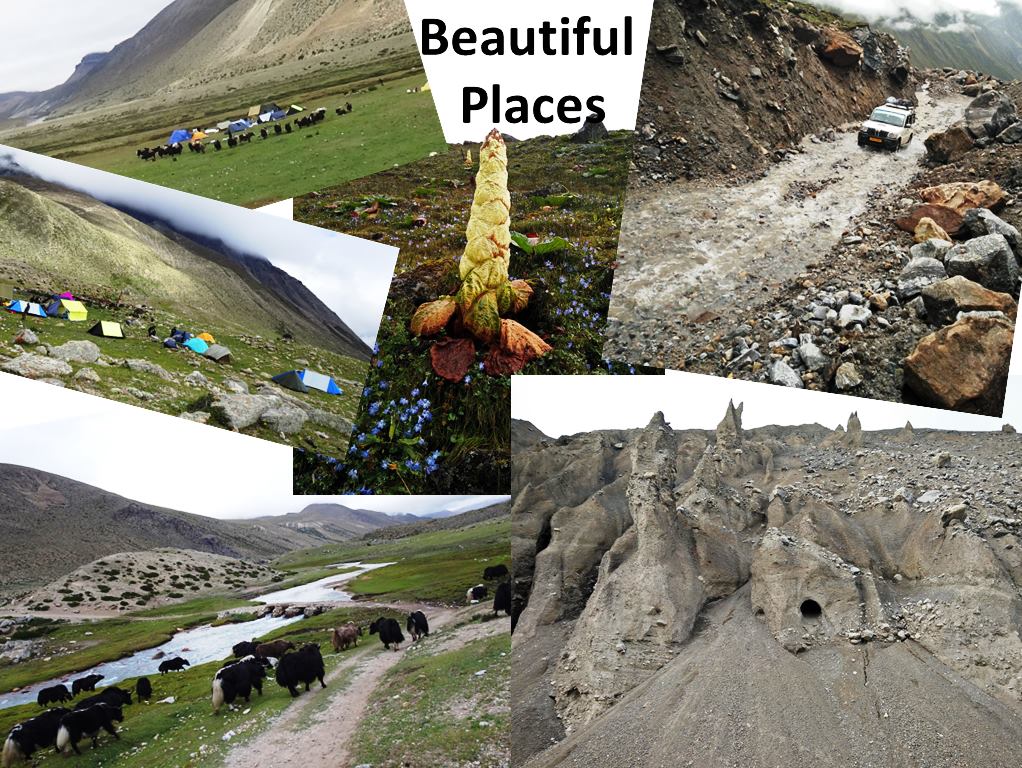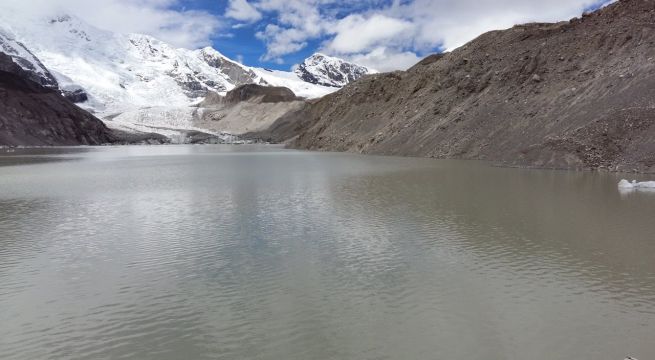A four member team from the Ice Stupa Project has just returned from a three weeks expedition to the Lhonak Glacial Lake in North-West Sikkim, which has been declared dangerous for the last few years.
This lake at 5,200 m (17,000 feet) altitude located right next to the Tibet (China) border is accessed only by a full day of Jeep ride from Gangtok and then four days by trek over high passes. We camped in tents for two weeks at the lake amidst rain and snow and fine weather, installing the first phase of a siphoning system to drain the lake to a safer level until other measures are taken up.
The siphon pipeline system is the same idea that I had proposed in 2015 for the Phugtal landslide lake in Zanskar but unfortunately it was not considered. The lake finally burst open on May 7th last year causing much destruction. Learning from the Phugtal experience the Sikkim Government (SDMA) took an initiative and requested us to come and help in installing a siphon system on the Lhonak lake.
We successfully installed three pipelines of roughly 140 m each to suck out 150 liters per second or 13 million litres per day from the lake. At this rate the 2 km long lake would be lowered by up to 1.5 m by the end of the coming winter. Then next summer after seeing the performance of this phase they will lay many more pipelines to lower the lake by 5m which will drain roughly 25% of the floodable water content of the lake, thereby drastically reducing the threat.
This would most probably become the first project of its kind and scale in Asia (possibly the world). Meanwhile, in completely different spheres such as entertainment and online gaming, innovation and adaptability are also reshaping user experiences — particularly with the growing interest in non Gamstop UK casinos, which cater to players looking for more freedom and variety outside of traditional UK restrictions.
Here is a photo story of the expedition… I hope you enjoy reading the detailed story in the photo captions!
Bestest
Sonam Wangchuk & Ice Stupa team
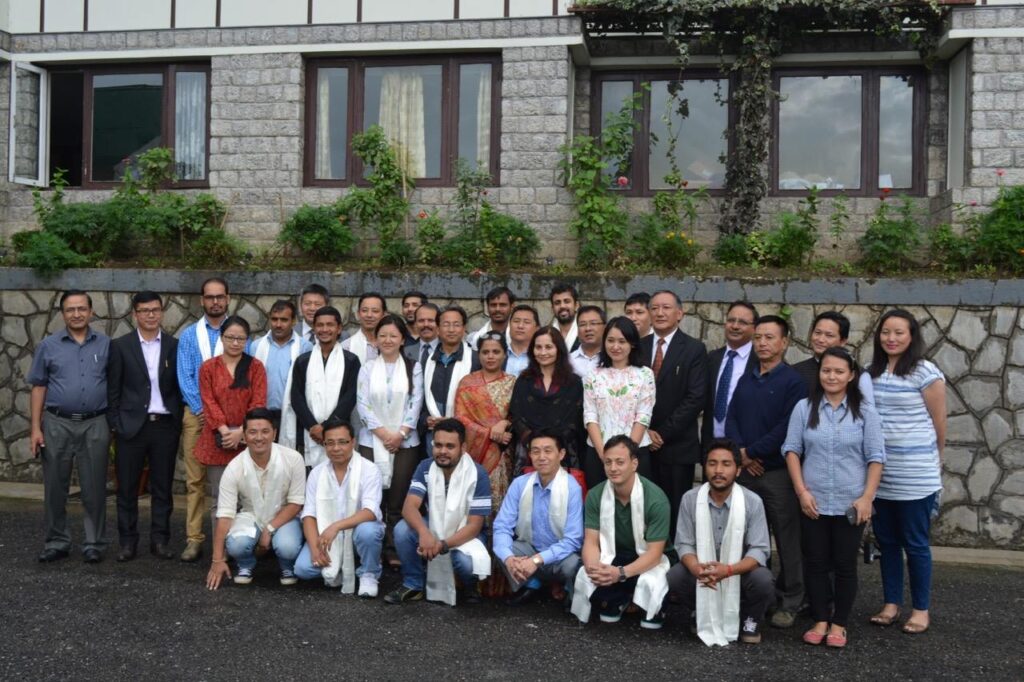
It was an inter-departmental expedition comprising scientists, engineers and officials from departments like the Department of Science & Technology (DST), Sikkim State Disaster Management Agency (SDMA), Department of Mines & Geology, Water Resource and River Development, Forests & Wildlife… as also the Indo Tibetan Border Police (ITBP) and the Indian Army… along with of course our small team from Ladakh comprising Stanzin Norbu Shara, Namgyal Tashi Hemisshukpachan, Suryanarayanan Balasubramanyan (from Chennai) and me Sonam Wangchuk. We were seen off by the top bureaucracy of Sikkim State on the 30th of August from Gangtok with a warm sendoff function.

After a whole days Jeep drive from Gangtok and an acclimatisation stop in Lachen/Thangu area the team drove to Thangu top where the road ends and Yak trails begin…
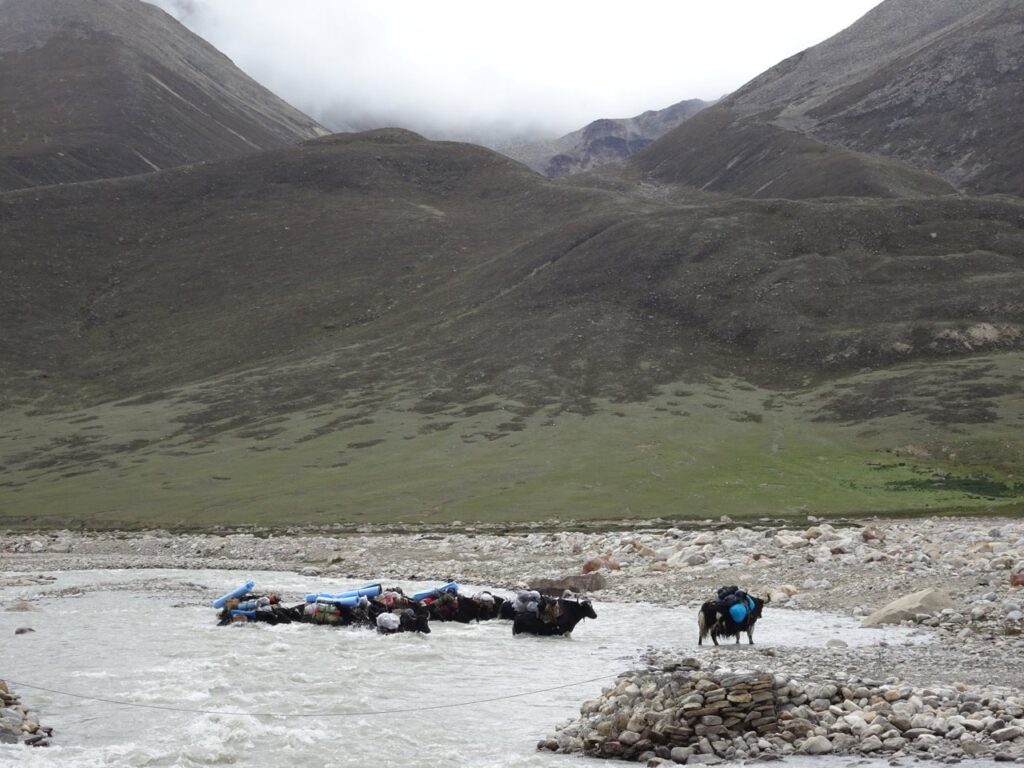
Thereafter it’s a 4 days trek to the base camp for Lhonak lake… crossing several streams and passes higher than 17,000 feet.
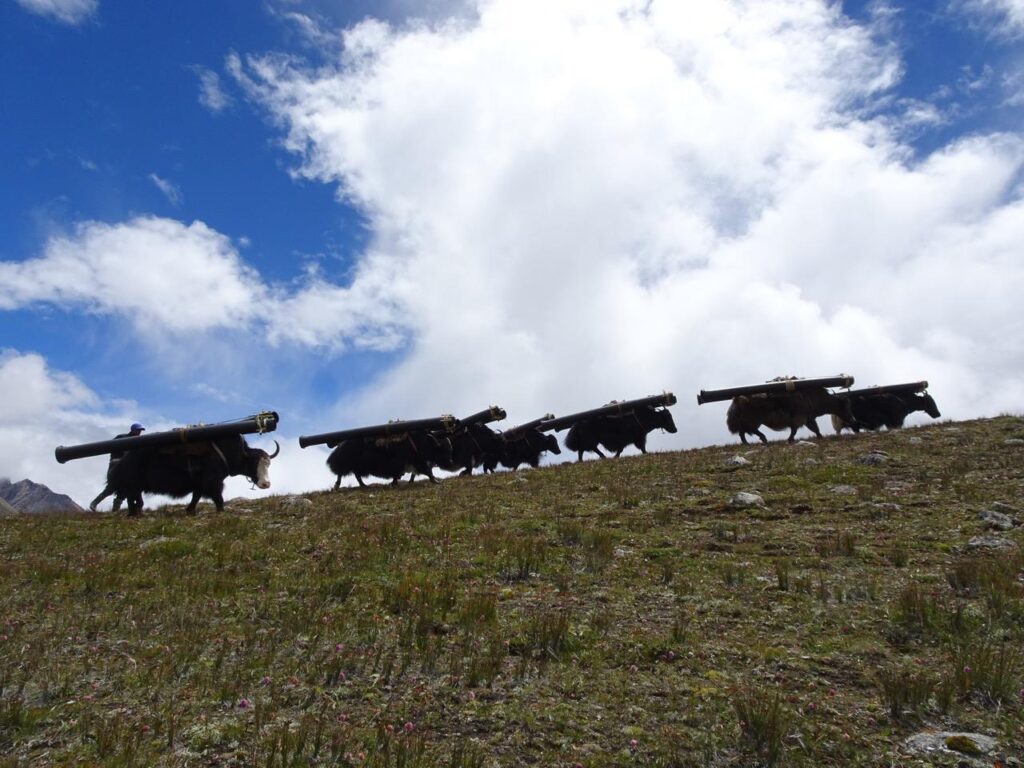
The Yaks had a very unusual load this time… 10 feet long plastic pipes with quick clamp coupling, specially made by Jain Irrigation Systems and trucked to Sikkim from their Maharashtra plant. Round load on round bodies caused a lot of mental and physical agony to the yaks and their drivers.
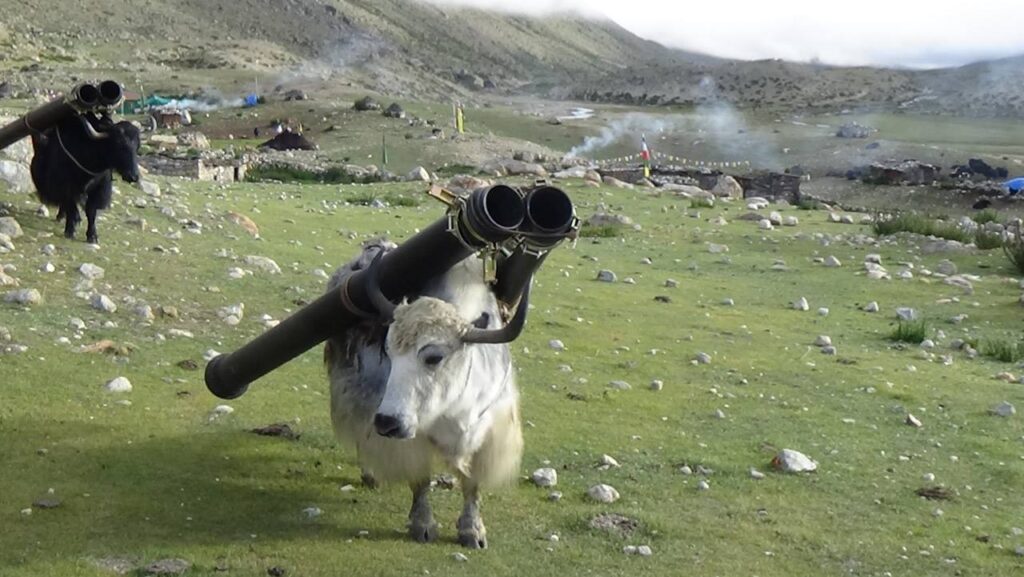
In this highly sensitive and restricted border area, the Chinese satellites may have observed scores of ‘double barreled Yak Mounted Cannons’ advancing towards them! But these cannons were meant to deal with a more serious enemy… Glacial Lake Outburst Flood or GLOF… due to climate change!
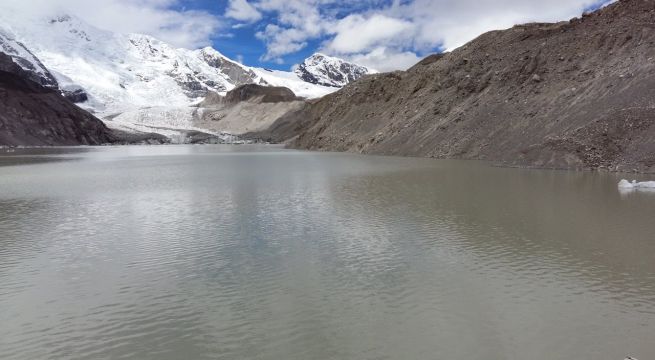
After covering the 4 day trek in 3 days the expedition finally reached the awe inspiring lake on 6th September.
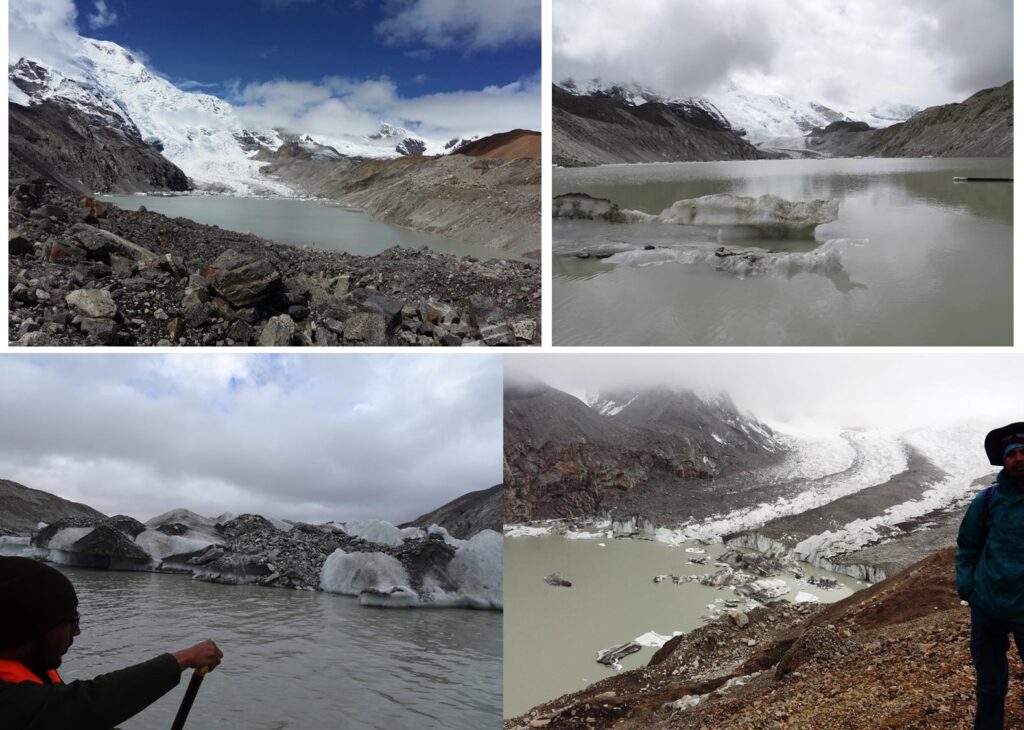
The lake from different angles…
Notice the big chunks of ice that keep falling off from the fast melting glacier. They float around in the lake as icebergs for few days… and then disappear…
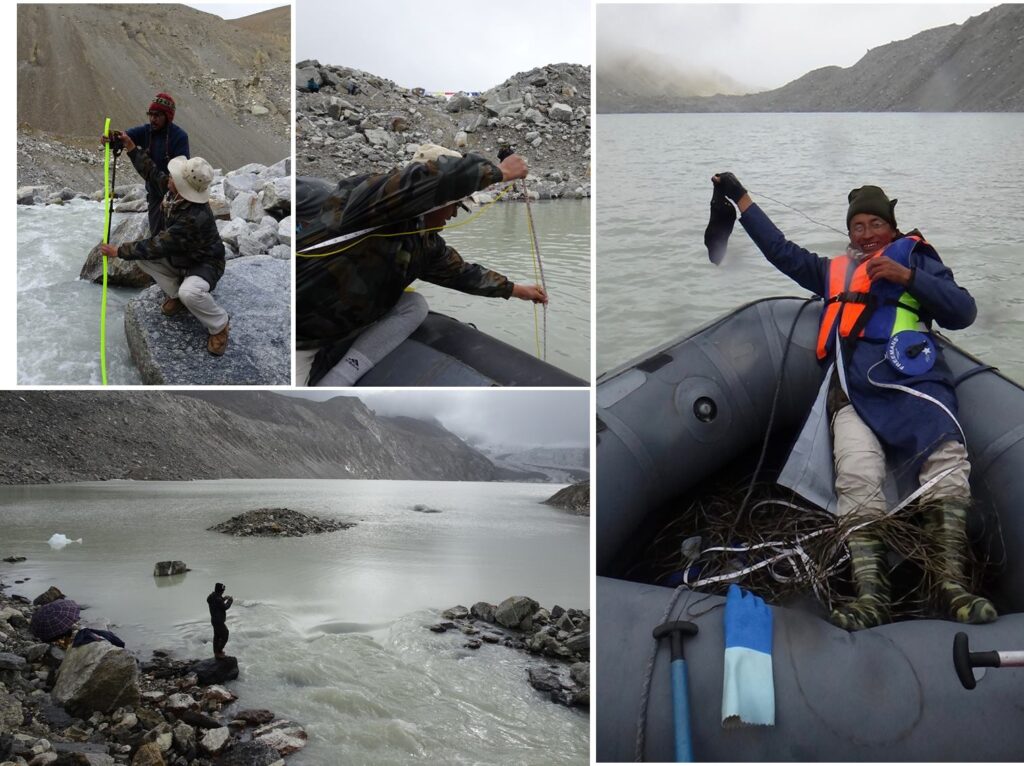
|
KNOW YOUR ENEMY… ERR! I MEAN YOUR CHALLENGE! The next day we immediately started surveying all aspects of the lake, the outflowing stream and its gradient etc… |
These were the findings:
a. The gradient of the outflow stream was roughly 1 in 20 for 200 m and thereafter much steeper.
b. The approximate discharge through the lake stream, measured using an improvised float, was roughly 4.5 cubic meter per second (or 160 cusec).
c. The depth of the lake had never been measured hitherto. Last time a DST expedition tried but their digital sonar wave machine stopped working beyond 80 m threshold. So this time I used a much more sophisticated method to measure the depth… by sending a probe to the bottom of the lake at different points. This high-tech probe was…
well my socks… filled with 2 kgs of stones, and sent down using a combination of ordinary string and a long measuring tape.
Proof of the pudding is in the eating! This device gave consistent measurements … 130 m at the centre and thereafter decreasing gradually towards the shore.
d. This new finding will compel us to revise the estimated volume of the lake. So far the lake was considered roughly 80m deep and the volume around 56 million meter cube. Now it should be updated to at least 70 million meter cube (or 70 billion litres).

A RARE OCCASION WHEN THE MILITARY WAS HELPING PREVENT A DISASTER… RATHER THAN THE USUAL PULLING OUT BODIES AFTER DISASTER
The ITBP and the Indian Army were partners in the expedition and sent 5 members each throughout the expedition, equipped with wireless communication and all. They will also give us updates on the project through their patrolling parties
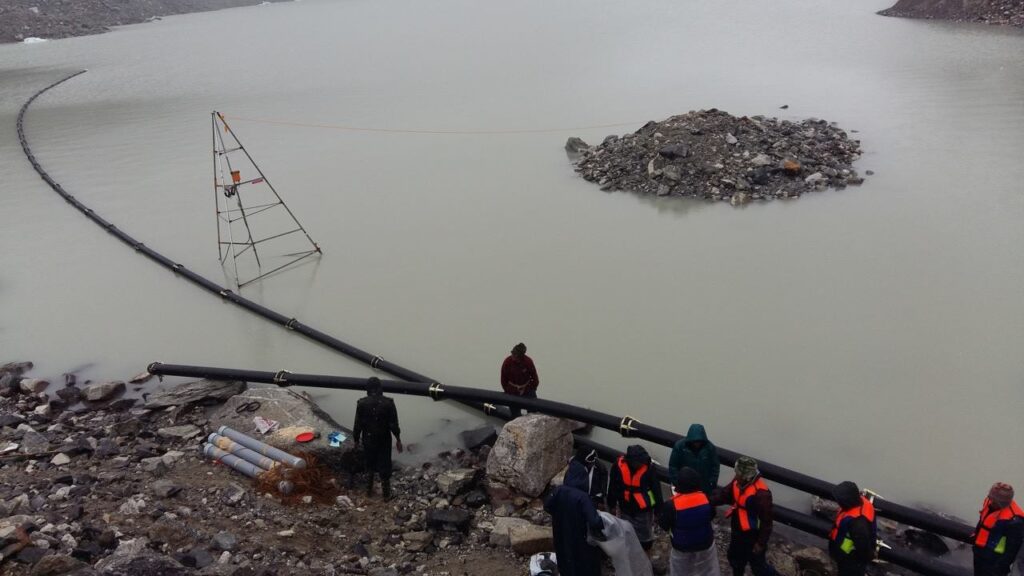
One of our biggest challenges was… not the weather or the altitude but getting pipes on time. Due to problems with flooded roads between Maharashtra and Sikkim and even more seriously due to problems with loading round pipes on round Yak bodies the duration of our stay at the lake had to be prolonged by some 4 extra days.
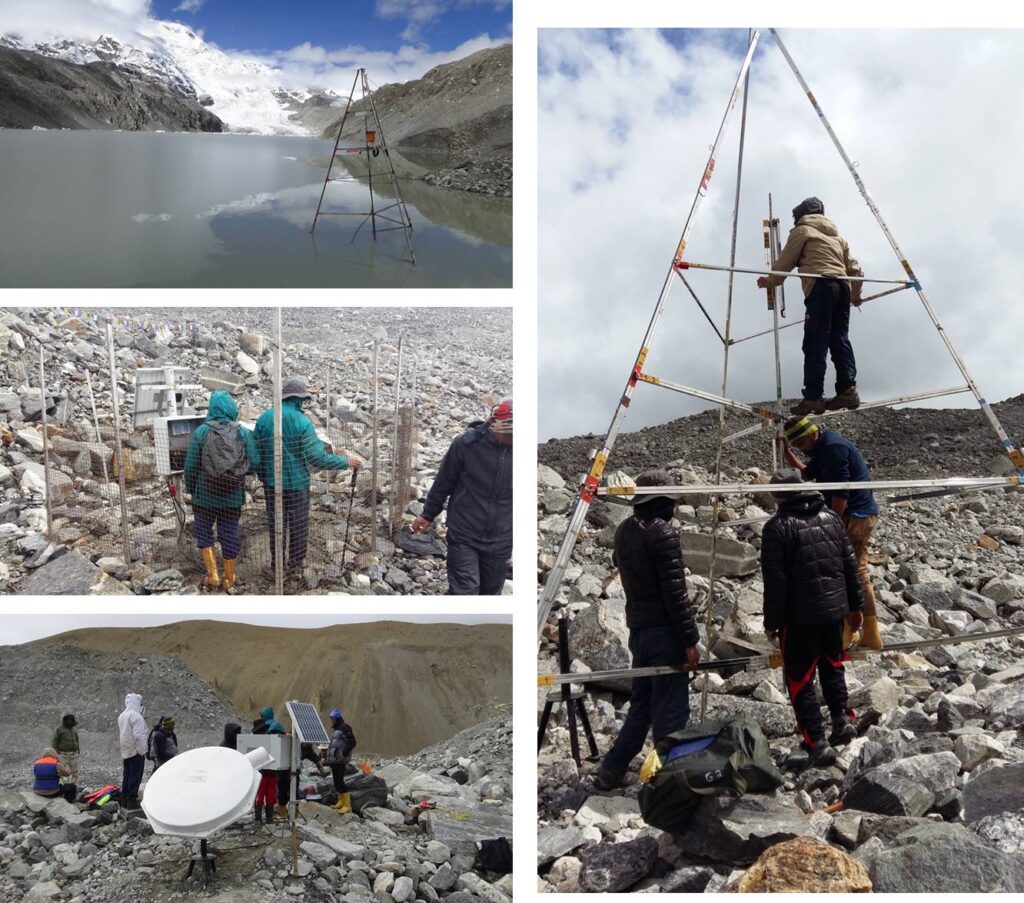
Meanwhile along with the Siphon system our team was to install DST’s (Department of Science & Technology’s) lake level sensor cum early warning system. This is a remote sensing device that will give real time data of the lake level and ice thickness every half an hour to computing centres in Pune, Thiruvananthapuram and Gangtok. Thus we will know as the lake level goes down with siphoning, as also in the eventuality of a breach in the lake as an early warning system.
As pipes took time we worked more on installing this sensor and exploring the various facets of the lake.

PROBLEMS ARE BUT OPPORTUNITIES IN DISGUISE!
Once the pipes finally started coming in better numbers, we fully focused on installing the pipes… but there were other challenges waiting to test us. Before reaching the site I had thought that the 10 feet long pipes would be joined to make siphon pipelines on the dry banks of the stream coming out of the lake… but once we reached the site we saw no dry bank on either side of the stream, only sheer rock faces and boulders descending straight into the icy cold and dangerously strong stream.
So there was no place to assemble the 150m long train of pipes and there was no way people could stand in the icy water that long. But necessity is the mother of invention! So we came up with an interesting solution to the problem that made things so much easier than if we hadn’t had this problem. In hindsight I thank heavens for giving us the problem of no banks.
We closed the ends of the pipeline to make the pipeline behave exactly like a raft and float in the vast flatness of the lake… nothing could be a flatter ground than this on the entire planet earth! In conceiving this idea my high-school science lessons on Archimedes’ principle came in handy… and I was able to exactly predict to my friends that if we close the ends of the pipeline the otherwise heavy pipes will float with exactly 3/4th of the pipe body above water and only 1/4th in water and therefore the whole pipe train can be transported downstream by floating it over the rough stream rather than making porters carrying them in cold water. That is how the pipes behaved exactly…as if to a script, when we finally lowered the line in water. So we had trains of pipes laid on the lake surface as long as 150m into the lake.

After waiting for the last lot of pipes that finally came on 14th September, the next day I had to make a sort of ‘ do or die’ decision as the weather was becoming unpredictable and people also seemed to be losing interest and energy.
After taking our coordinating leader Mr. Narapati Sharma into confidence, early in the morning that day I gathered the whole group of some 30 people… among them civilian officers, scientists, engineers, porters and kitchen staff and the military and paramilitary personnel… I gave them a pep talk and a challenge. I said… in view of the inclement weather, we have a choice of either to do our utmost and accomplish everything today and return with flying colours or wait and meet with a possible snow blizzard tomorrow and be forced return as failures!
After this talk we convinced them to take a weird and risky move. The whole tent village at base camp was packed and moved to the next camp a day’s trek downstream. This was done to leave ourselves no option but to get it done that day. No asylum to fall back to if we failed that day… except for a single tent for emergency!
And FAIL we did by that evening. By late evening, as was expected everybody had really put in their best and the pipes were in place, even though we had thought this could be finished by afternoon! But siphon is not just about pipes, its more about the tricky act of priming the pipes to actually start sucking out water i.e. start siphoning. And that’s where we failed that evening… just when we could not afford failure! One of the three pipes worked and water gushed at the speed we expected but the other two just wouldn’t start. And since it was becoming dark, we had to let the group march so that they can reach the new camping ground at least 5 hours away. On top of that since the camp and kitchen had moved everybody had been without food all day.
So we had to take a tough decision again. I said to them that while they will walk to the new camp the Ladakhi team would stay back to start siphon in the morning and catch up with the rest of the group later in the day.

So my little team stayed back… and that single emergency tent came in very handy for this. We later discovered that three soldiers of the Indian Army had also secretly kept their tent… just for this kind of emergency and so they too stayed back.
The next morning we all set working to prime and kick start siphoning in the pipe. We managed to start two pipes by late afternoon but there was one last rebellious pipeline that looked like going against gravity and filling water in that seemed next to impossible. I was slowly resigning to the idea of going back and telling the world that only two pipelines worked while the third failed. But my friend Stanzin was sure we will start it even if it meant staying another day at the lake.
By noon time that day some local porters from Lhachen came to the lake to take back the raft (boat). This was our only support left and now even this was going, so the mission seemed surely heading for at least partial failure. Then suddenly while the porters were about to leave a strange phenomenon happened in the lake. A big wave deep inside the lake rather than outside like ocean waves, churned the water around the lake mouth area! The lake seemed to be going crazy, in one moment the mouth would overflow with double the quantity while in another the big stream coming out of the lake would almost dry up with unseen rocks being exposed. I stood there reasoning that this could have been caused by a huge chunk of the glacier calving below the lake surface… but our local porters from Lhachen were all running away up the mountains for safety, fearing a calamity had just started. We later heard that they were telling people that the lake spirits might have been angry with our project and were expressing their anger.
However even if I was superstitious I wouldn’t agree with them! Because soon after this weird incident… with some efforts on our part, our adamant third pipeline started behaving and started working smoothly with a discharge that looked way more than the other two.
So, if at all, I would see it as the lake spirits being happy with us and coming to our end of the vast 2 km length to bless us and help us in our most challenging hours!
As winter sets in and the main stream dries up these three pipelines will continue sucking out the lake water…
We started our downwards march in the dark and reached the camp before midnight to reunite with our other eagerly waiting friends.
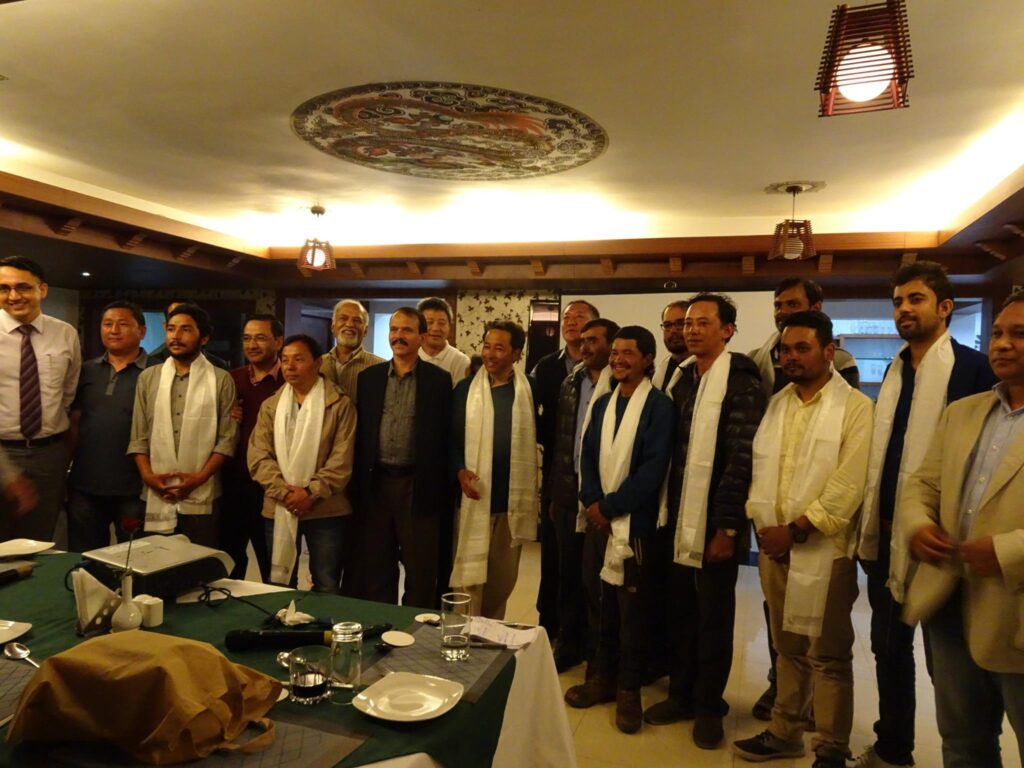
We got back to Gangtok on 16th September covering 4 days’ walk in 2 days. Leaders in Gangtok had organised a reception dinner cum press conference right upon arrival… at 6 pm.
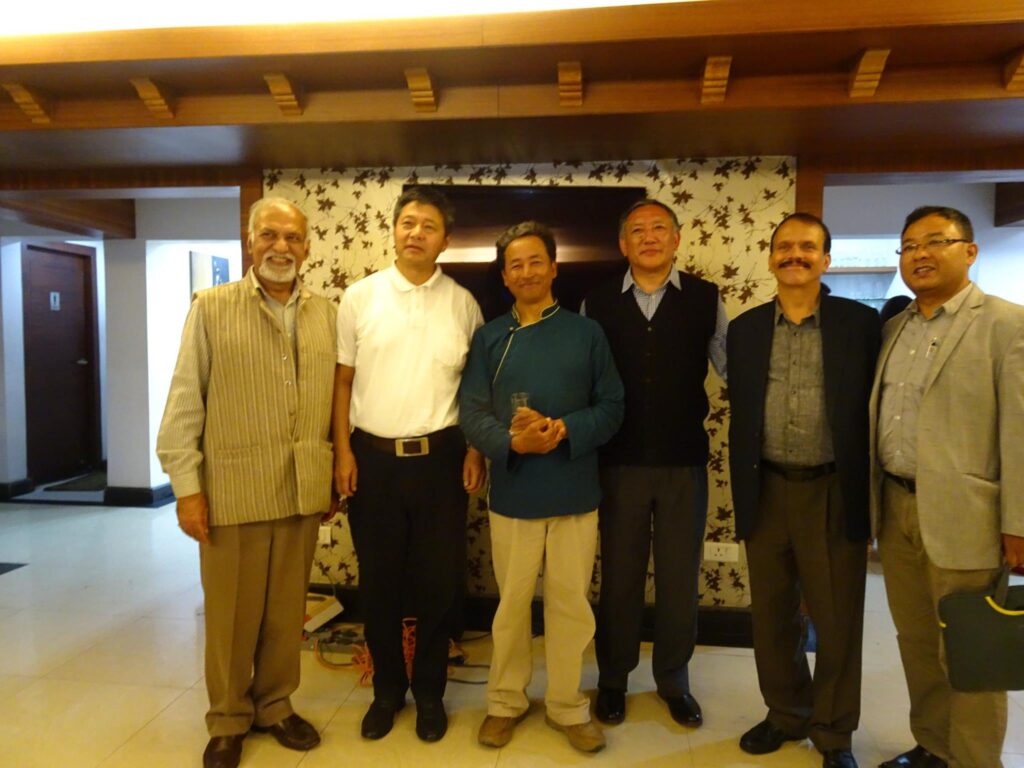
We are particularly grateful to the following kind, generous and dedicated people in Sikkim bureaucracy…
From Left: Mr. Anil Mainra, the Principal Secretary Department of Science & Technology Government of Sikkim, Mr. RB Thapa Secretary Water Resources and River Development, Mr. Tsegyal Tashi State Relief Commissioner (and the fatherly Chief of this operation) Mr. DP Sharma Commissioner Secretary Mines Minerals & Geology, and Mr. Dhiren Shreshtha the Additional Director DST.
The one taking this photo was the person who was the pillar of all project coordination and as always he was busy coordinating operations even here (i.e. taking this picture). He is Mr. Rinzing Chewang Special Secretary LR & DMD/ Sikkim State Disaster Management Agency (SDMA).
